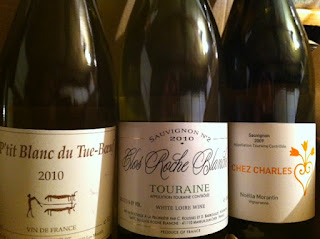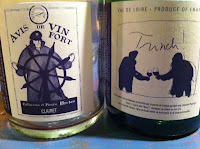Recently, I had
the pleasure to meet a sommelier from Quebec France
With her
declaration, I noticed that every bottle on the dinner table was Gamay or a Gamay
blend: Noella Morantin ‘Mon Cher’, Puzelat-Bonhomme ‘Le Tel Quel’, Clos duTue-Boeuf ‘La Butte’, Christophe Pacalet ‘Fleurie’, Jean Maupertuis ‘Les PierreNoires’, and Jean Foillard ‘Morgon Cuvee Corcelette’. Unconsciously, I had brought-up all Gamay
and Gamay blends from the cellar for the dinner.
My love for Gamay
and Gamay blends know no bounds. Gamay grown in the volcanic hills of
Beaujolais and its 10 crus are
generally fuller than the Gamay grown on the limestone hills of Loire . Gamay, made with care, has butt-naked exuberance and
deliciousness that no other wines can match.
And the prices are so reasonable.
Perhaps, it is
the butt-naked exuberance that is translated to the ambiance at dinner tables. Such ambiance is palpable at my favourite
neighbourhood restaurants in Paris
There are more
profound wines from other appellations in France Beaujolais , Auvergne





.JPG)
















